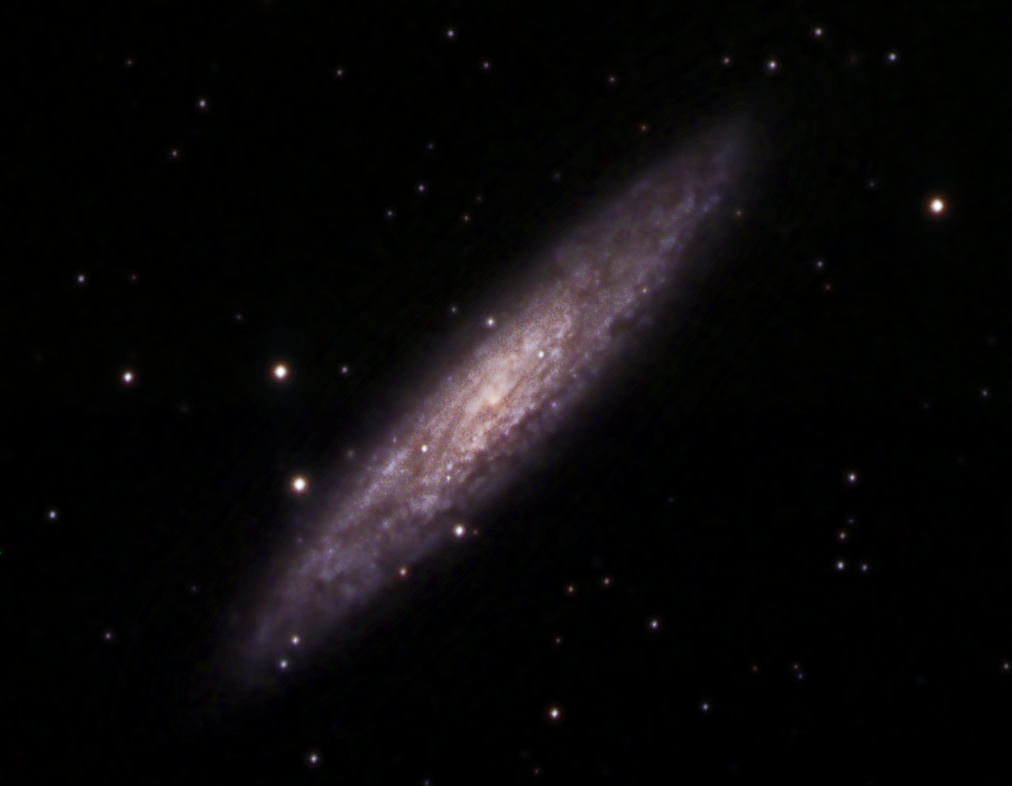
The Sculptor galaxy is a spiral galaxy with an extremely small, bright nucleus, and has patchy arms with much dust and few knots. The galaxy shines at an integrated magnitude of 7.6, but this light is spread out such that the surface brightness is only 13.2. The Sculptor is the brightest of the Sculptor Group of Galaxies, which is the cloest galaxy group to our Local Group. If this galaxy had been located further north, it would surely have been one of the showcase objects in the Messier catalog. The galaxy was discovered by Caroline Herschel in 1783, during one of her systematic searches for comets. It is a tribute to her observing skills that she was able to detect it from her latitude using the scopes available to her at the time. If you live at a southern latitude, this galaxy is perhaps the easiest to observe in a small telescope, with the exception of the Andromeda Galaxy. It is visible in binoculars. The galaxy has a total mass of at least 150 billion suns.
This is a tri-color composite CCD image using an SBIG ST-8E CCD at prime focus on a Takahashi FCT-150 refractor at f7. Guiding was accomplished with the built-in autoguider in the ST-8E. A CFW-8 color filter wheel was used to acquire the color data.
This image was taken at the Sunglow Ranch, near Pearce, Arizona.
NGC 253
Constellation: Sculptor
RA: 00h 47m 27.4s Dec: -25d 17' 59"
November 18, 2001
Image by Sid Leach
Sunglow Ranch, Arizona
Recent Images.
Complete list of images.
Description of equipment used to acquire images.
Home
Feedback and comments should go to Sid